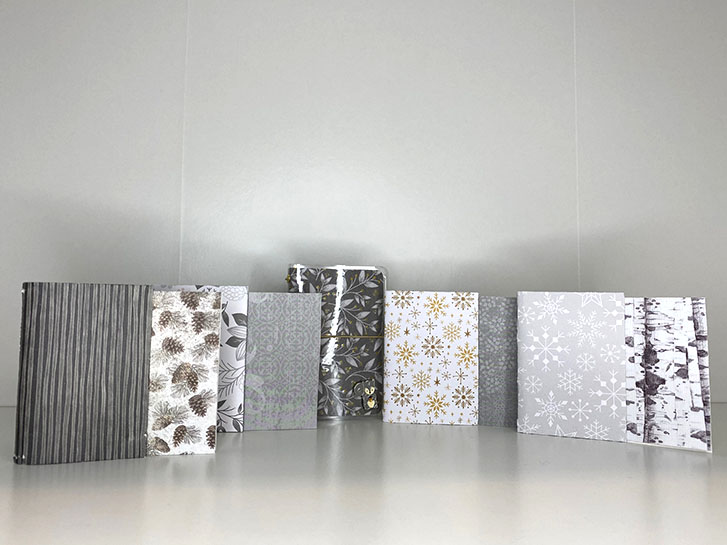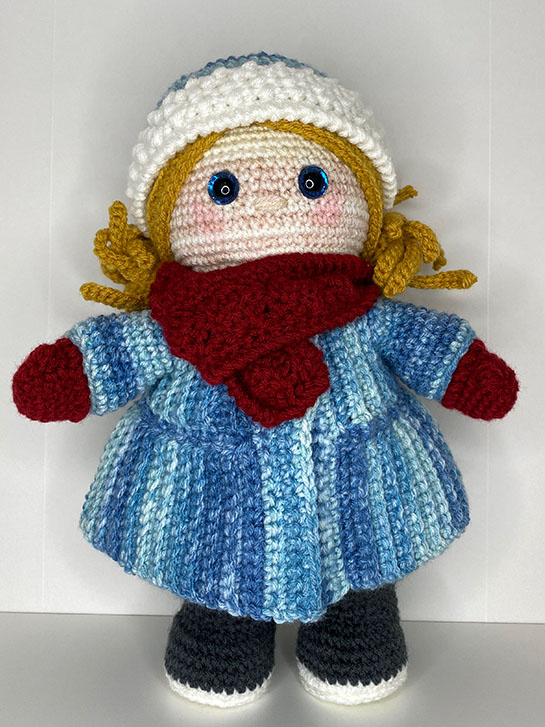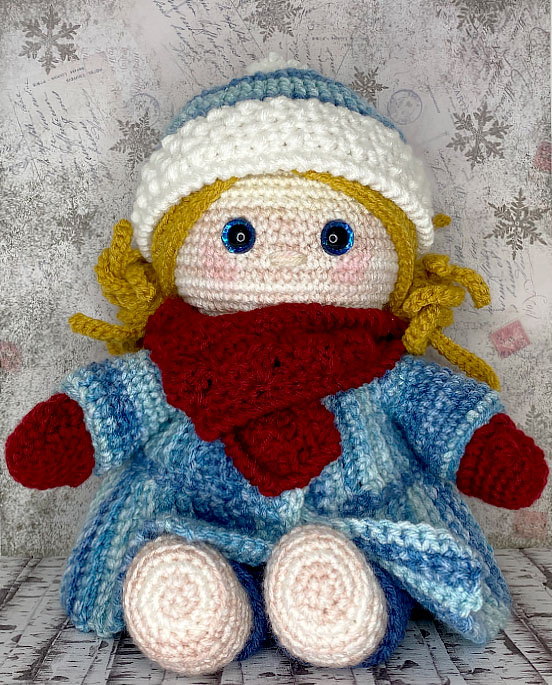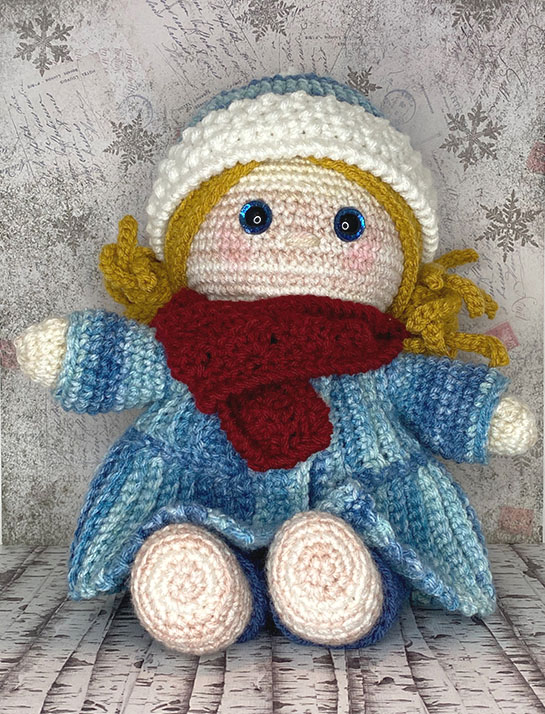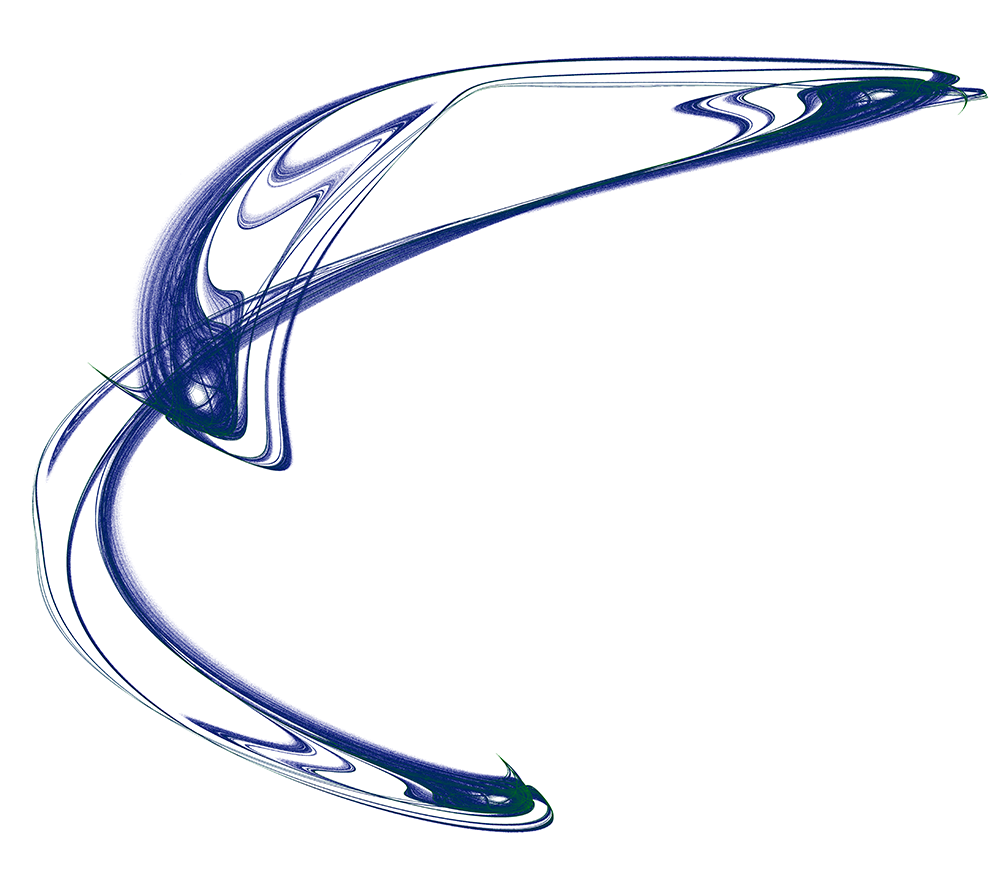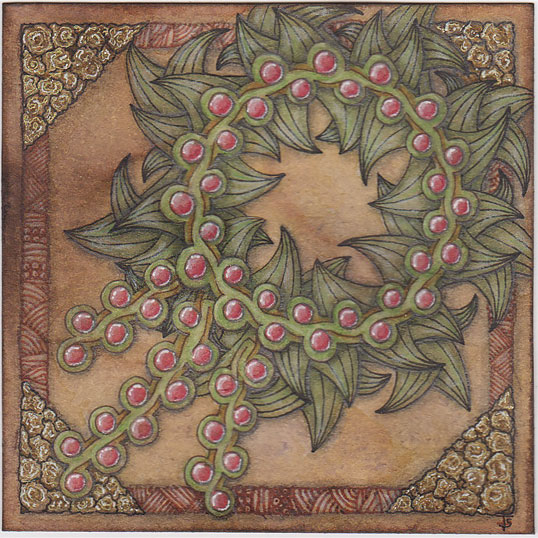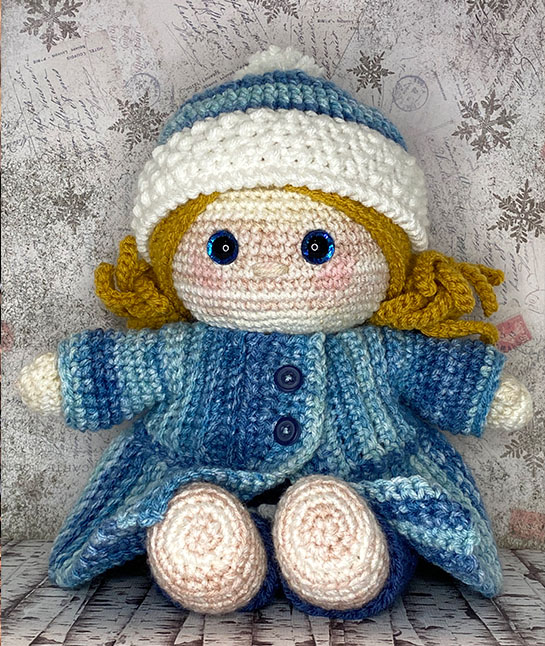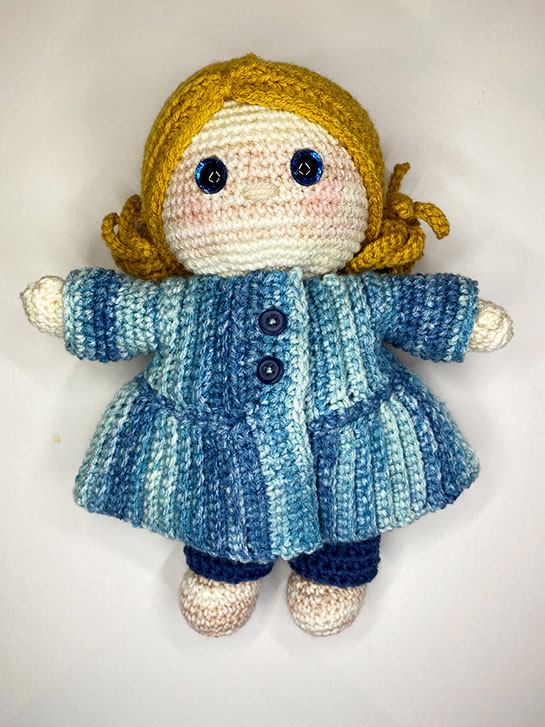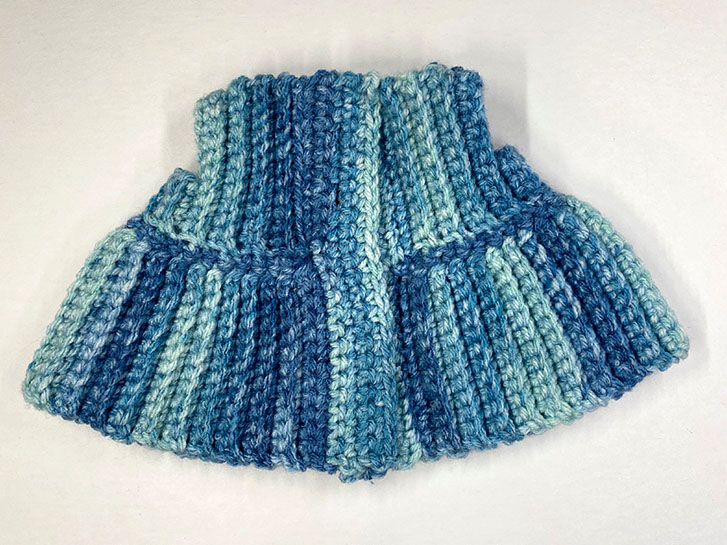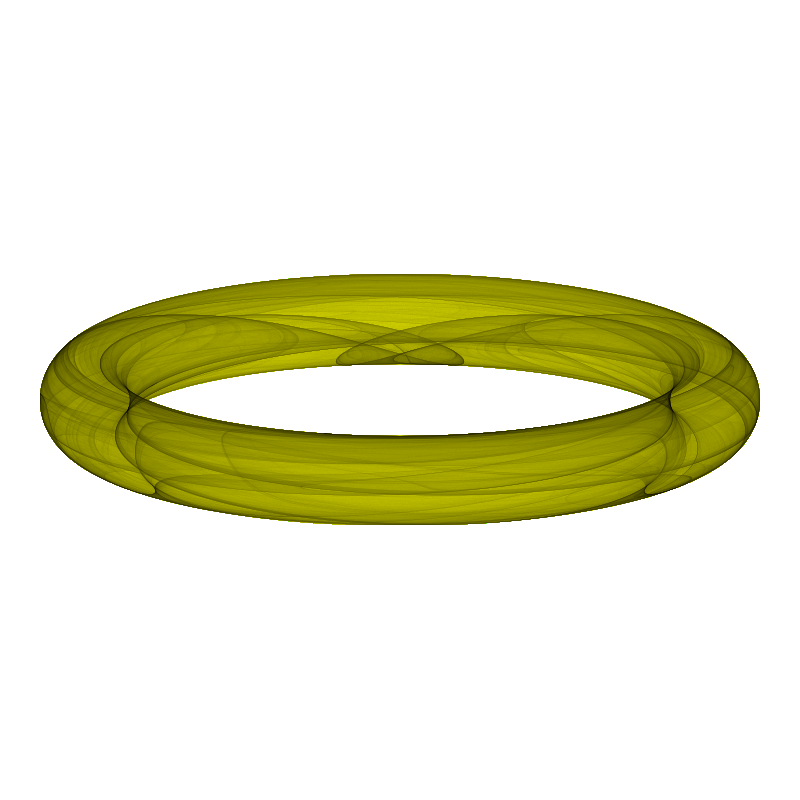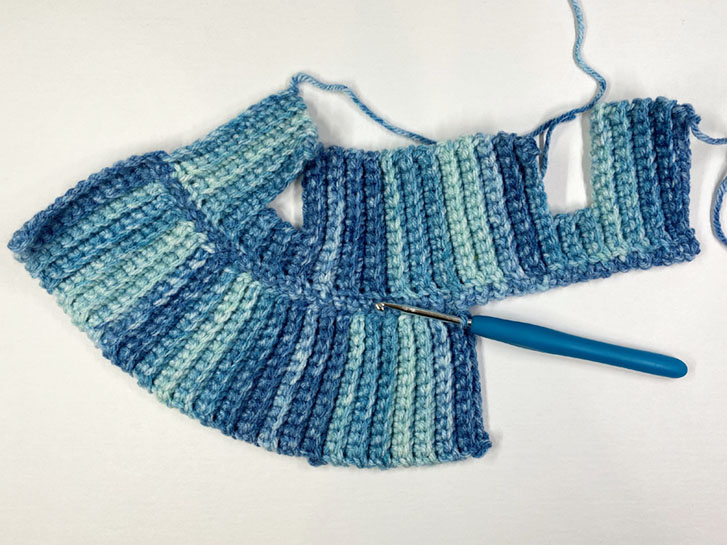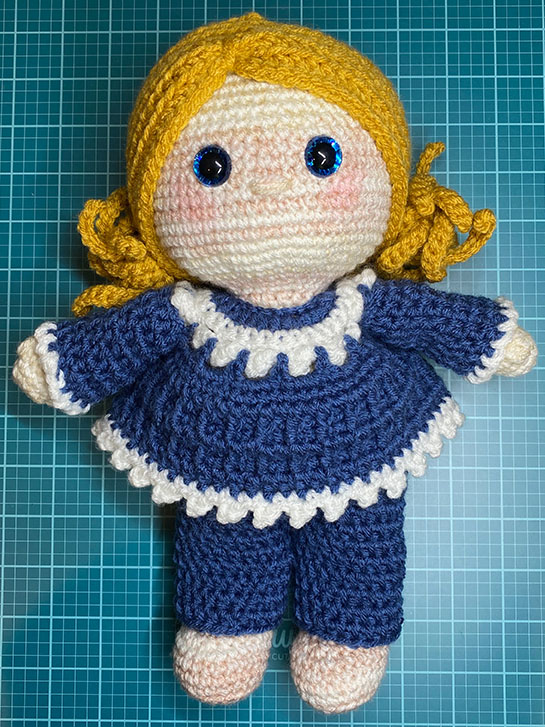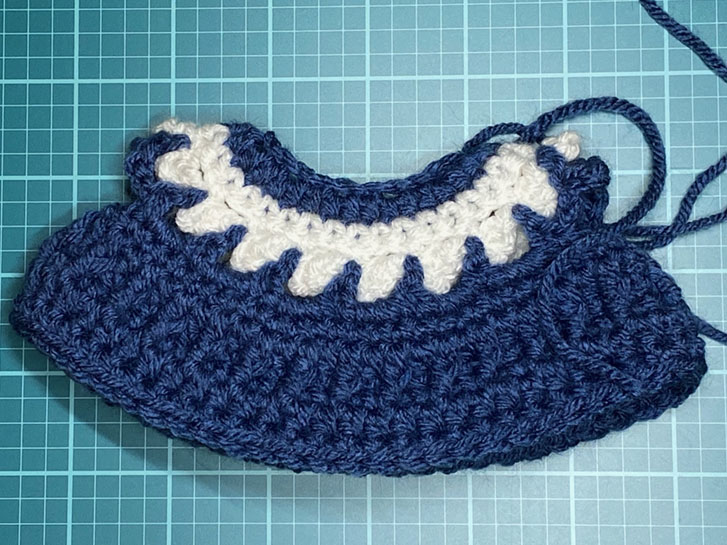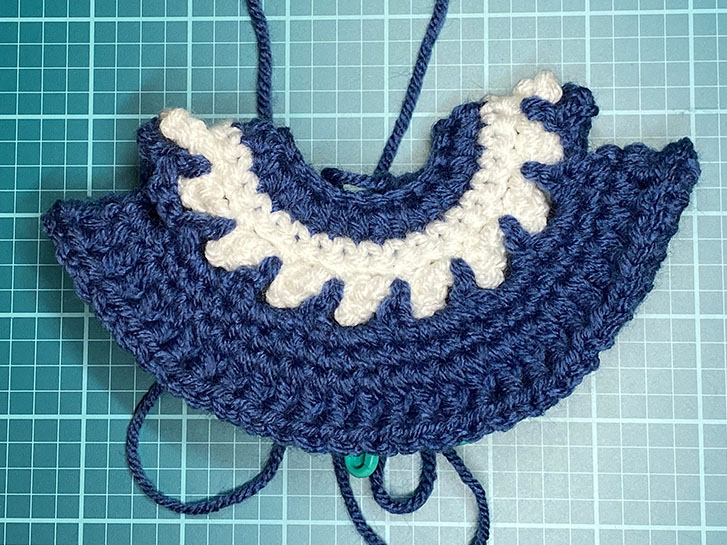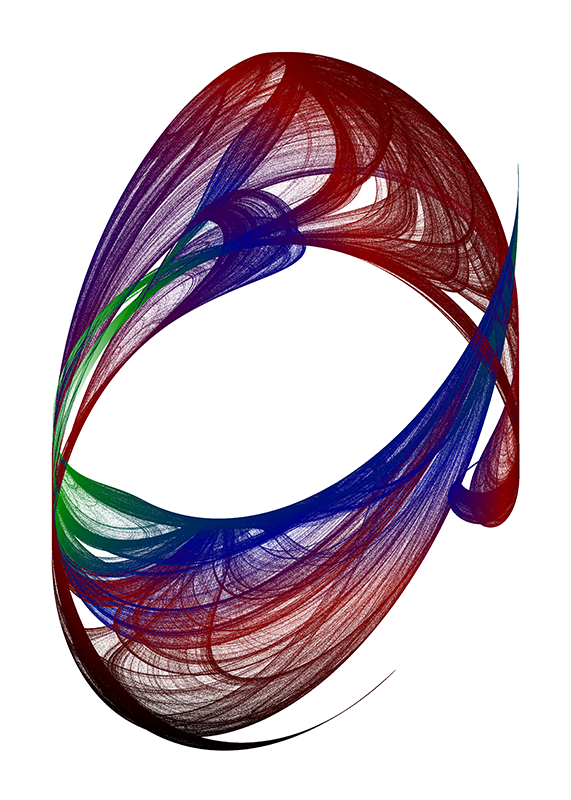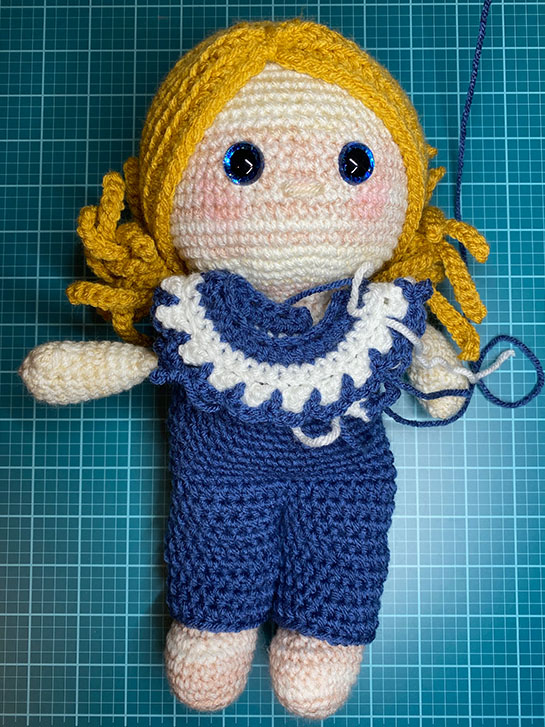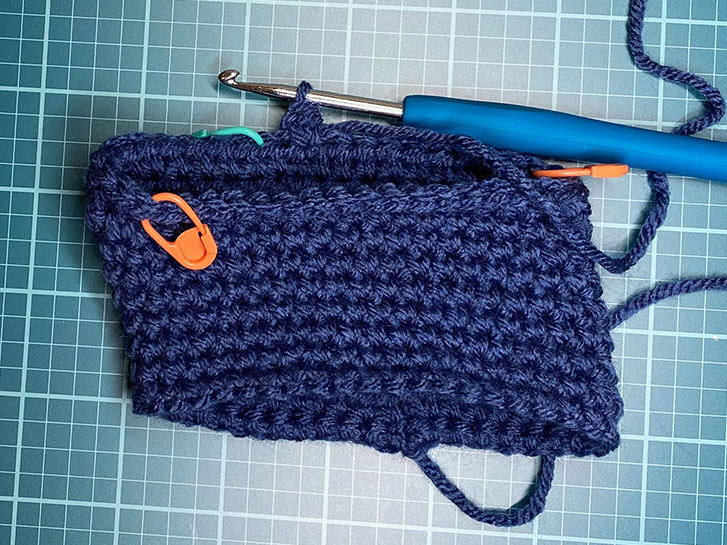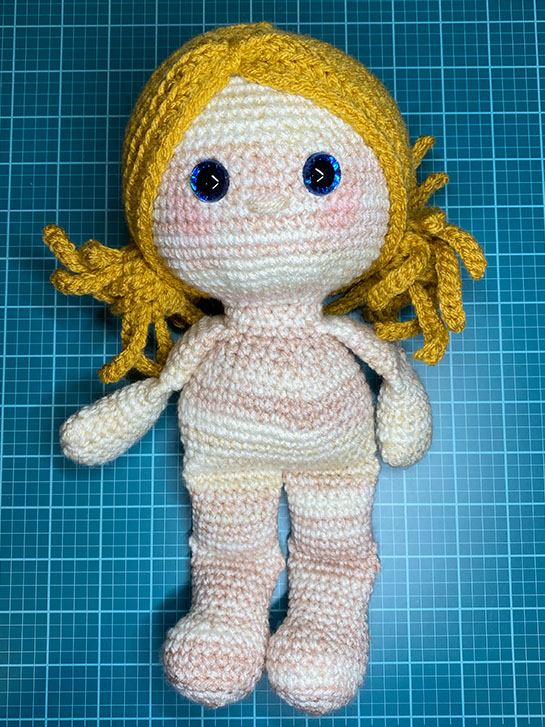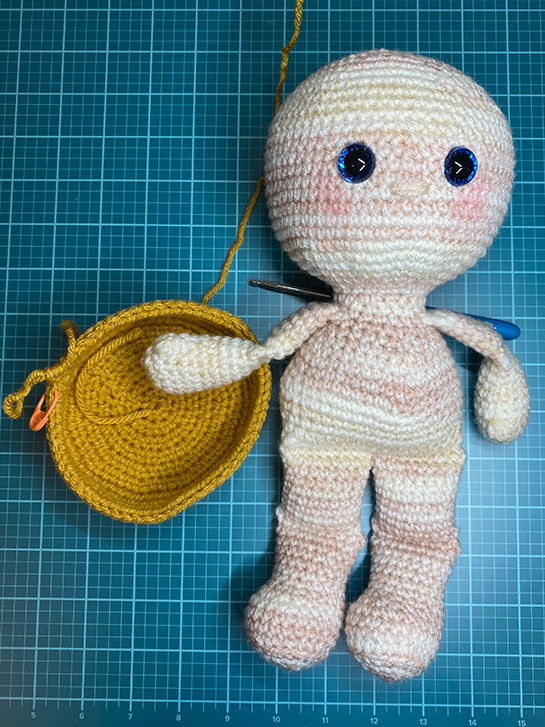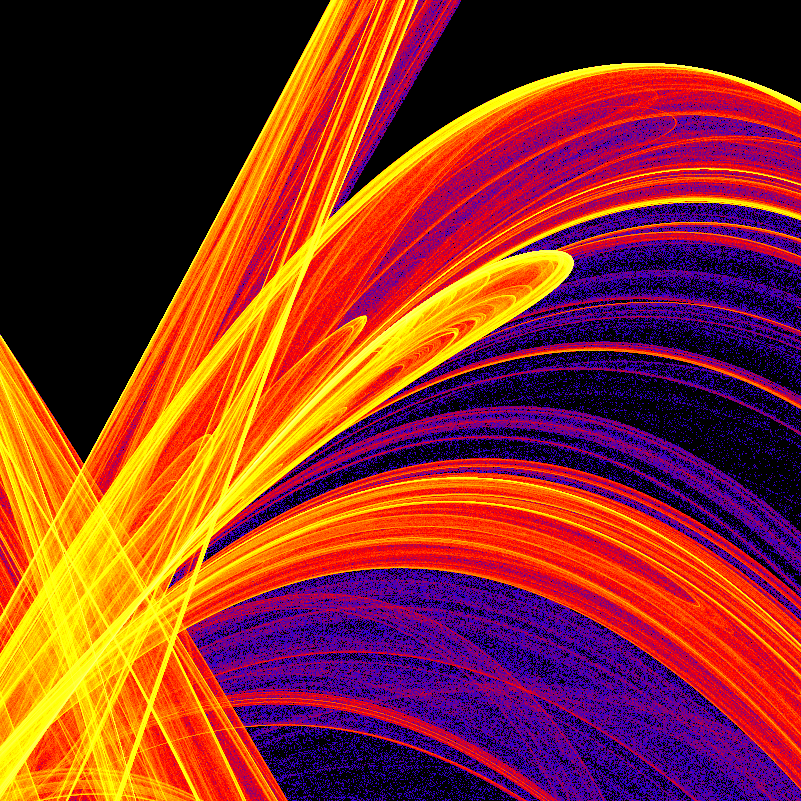Welcome to 2024!
I am beginning my year by going back to my roots. I realize, it may seem strange to go backwards to go forward. This year, however, I want to continue doing things that worked for me, while leaving behind the things that didn’t.
One of these is my tiny art journals. I love them because they give me just enough space to do a bit of journaling, keep track of some things that I need/want to remember and just enough room to create a small art piece. They are fun to do, and don’t take up a lot of time.
It’s finished!
I can’t believe that I’ve finished my first Crochet Along project! It’s been a lot of work, and I had to fit it in with all the crazy stuff we have to do during the Christmas holidays.
I did make a couple of mistakes. However, the more I did, I feel like I made fewer mistakes and got better at keeping my tension under control.
I love the end results, and I’ll probably make more clothes for this doll over time.
The week before Christmas is always so busy! It seems like I’ve just gotten up and it’s already time to sleep. I had only a little time to myself. However, by working a few minutes here and a few there, I managed to finsh the scarf for the MCAL.
I chose the deep red color as a contrast to all the blue and white in this set so far.
“Everybody should learn to program a computer, because it teaches you how to think.”
— Steve Jobs
I’ve shown many attractor images I have generated over the past few weeks, but how have I been drawing them? I have been writing code to do so, but stopped including it in the posts because it was getting long and complex. I promised that, someday, I would share the code. Today is that day!
I finished the hat from the 4th set of patterns! This hat uses Front Post Double Crochet, Bean and Twisted Single Crochet stitches to create rich texture for the hat. While these stitches have already been used on other parts in this project, they all come together in the hat. I am now feeling much more confident about doing these and I’m sure I’ll be using them for other projects.
This pattern is fairly easy. It is a repetitive pattern, so once you understand how it works, it moves along fairly quickly.
Here, you see the top part, skirt and button bands are completed.
All I have left to do is to sew on the buttons and crochet the sleeves!
#weebeeappreciationsociety #weebee #weebeedoll #crochetmakealong
Ash nazg durbatulûk, ash nazg gimbatul, ash nazg thrakatulûk agh burzum-ishi krimpatul.
One ring to rule them all, one ring to find them, one ring to bring them all and in the darkness bind them.
— J. R. R. Tolkien’s The Lord of the Rings (1954–55)
I’ve been going on and on about de Jong attractors lately , but that is only one kind of attractor. There are many others! This image is a Svensson attractor. It uses a set of equations very similar to what the de Jong attractor uses, and also requires four constants which define the shape of the result. Because of the way it handles sine and cosine, circular results are far more common than with the de Jong equations.
We got the new pattern for the next week of the Crochet Along! This one is for a coat that goes over the cozy outfit!
The coat is theoretically made from a lighter blue color. When I purchased my yarn, that color was out of stock. However, I did find this varigated yarn that seemed to cover the entire range of blues that were to be used for this pattern.
As you can see, once I got past the difficulty of learning a new stitch, I was able to move on and complete the top of the ensemble. I think it’s pretty cute, and I would make this again in another color way.
The pants are simple enough, and they could be made in many different colors to go with all different tops.
#weebeeappreciationsociety #weebee #weebeedoll #crochetmakealong
If you recall from yesterday’s post, I was having problems with the various new things that are in this pattern. The top is adorable, but it uses stitches and techniques that I’ve never done before.
I had so many problems that I asked for help in our Facebook group! But I got a great suggestion from one person, which was to watch a video about the “waffle stitch” on YouTube. I found a video that explained it perfectly and I recognized, right away, what I was doing wrong.
As you can see, I didn’t get very far from the previous day. I had a lot of difficulty with how to do the first row where you are supposed to crochet around a post. Somehow, I’ve ended up with twice as many stitches than I should have. I really don’t understand this.
I will have to post in the Crochet Along Facebook Group and ask for some help.
In my last post , I talked about coloring a de Jong attractor based on the number of times each point in the image was generated by the de Jong equations. Of course, there are other ways to do it! Since we have more than one way, we’d better name them so we don’t get confused. We’ll call the first method Frequency Coloring since it’s based on how frequently each point appears. Now let’s talk about Velocity Coloring!
I got alot done! I finished the pants, and now I’m working on the top to the cozy winter set.
These design rows have turned out to be a little bit of a challenge. I have frogged them out several times, because what I didn’t just didn’t look like the photo of the finished top. I think I finally have it now.
#weebeeappreciationsociety #weebee #weebeedoll #crochetmakealong
The next section of patterns is a cute sweater and pants, in medium blue and white, for our doll!
I didn’t get very far, because we were very busy. But I did get most of the top part of the pants done! This part fits nicely around the doll.
#weebeeappreciationsociety #weebee #weebeedoll #crochetmakealong
I did it! I finished all of the patterns for the first week of the MCAL!
I finished the wig yesterday. I haven’t sewn it to the head of the doll. I’m not sure I’m going to do that, since the way it is now allows me to change her hair any time I wish. The “space buns” were pretty easy to make, and easy to sew to the wig. I can see where the same idea could be used for braids, a ponytail, or a single bun. I love the versitility of the wig!
I accomplished a lot over one day! The doll base is finished. Although this is a varigated yarn, I think it’s not a bad choice for a doll body! Her little nose is in place, and her cheeks have a nice blush. And I love the way these blue, blue eyes came out! I don’t often make this color eyes, but I love the color for this project!
I made a few mistakes that I didn’t see until it was too late to fix them, but over all, it came out cute!
In my last post , I took a first stab at coloring a de Jong attractor. Here was my image:
The main problem was that I had wanted an image in which the points with the fewest hits were blue, transforming to red for points hit the highest number of times, but as you can see, the image was stubbornly mostly blue, whereas I would have expected a lot of shades of purple as the blue transformed to red.
